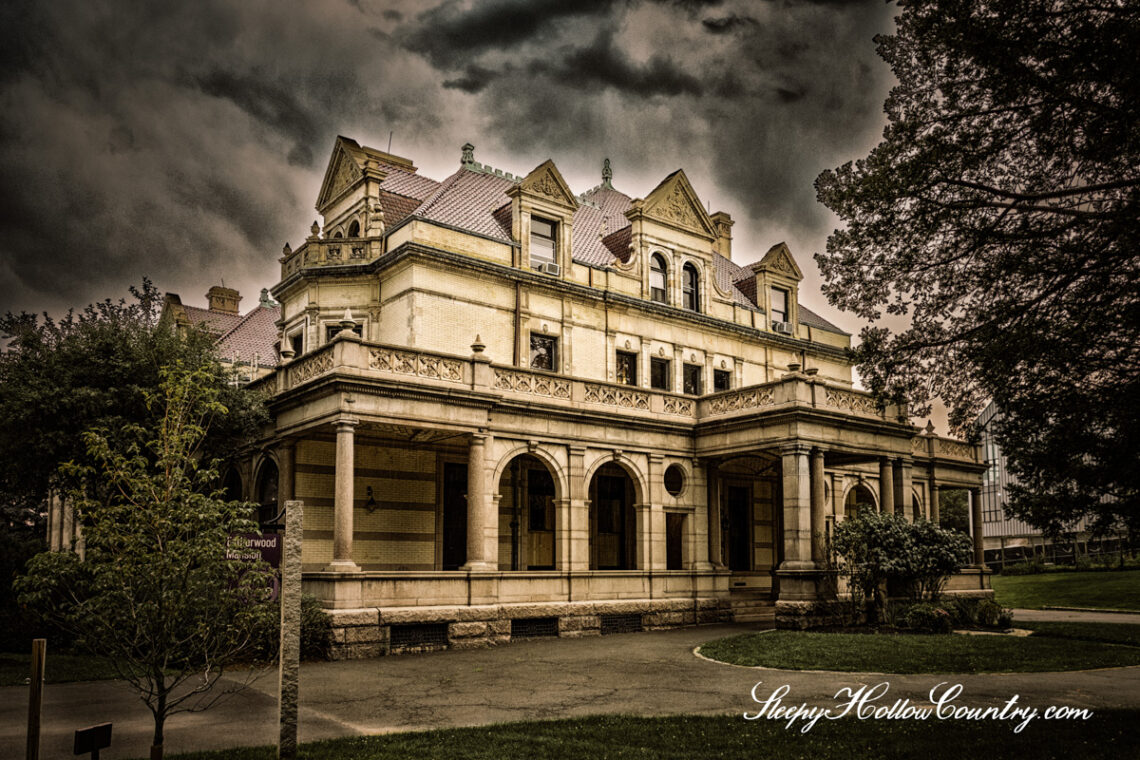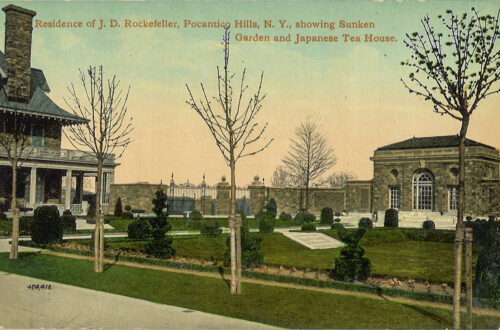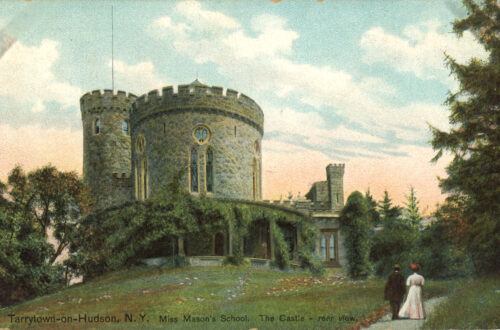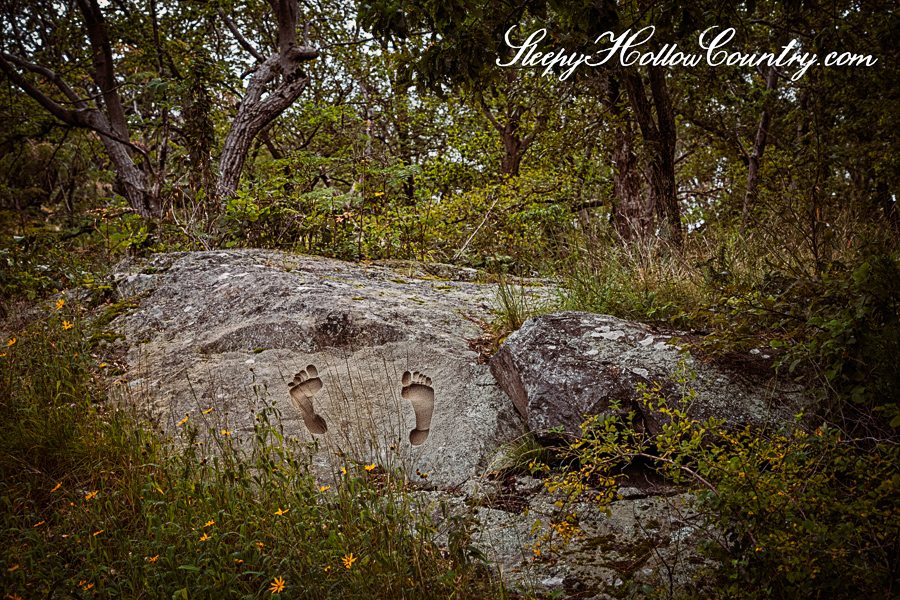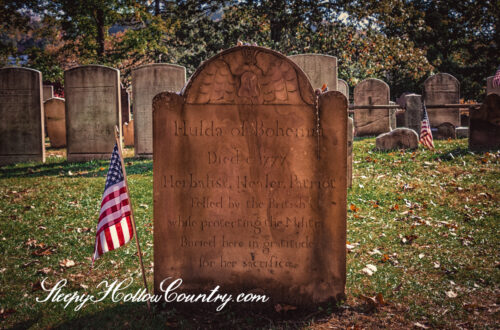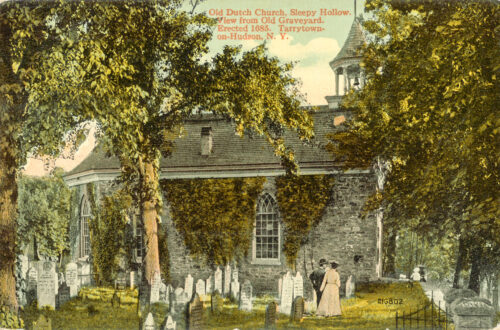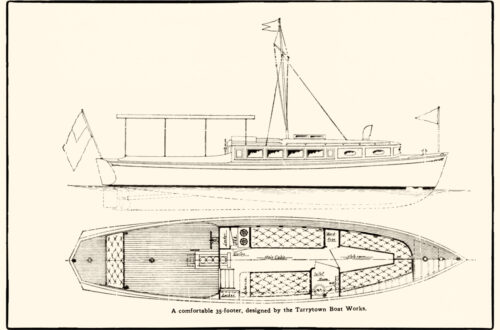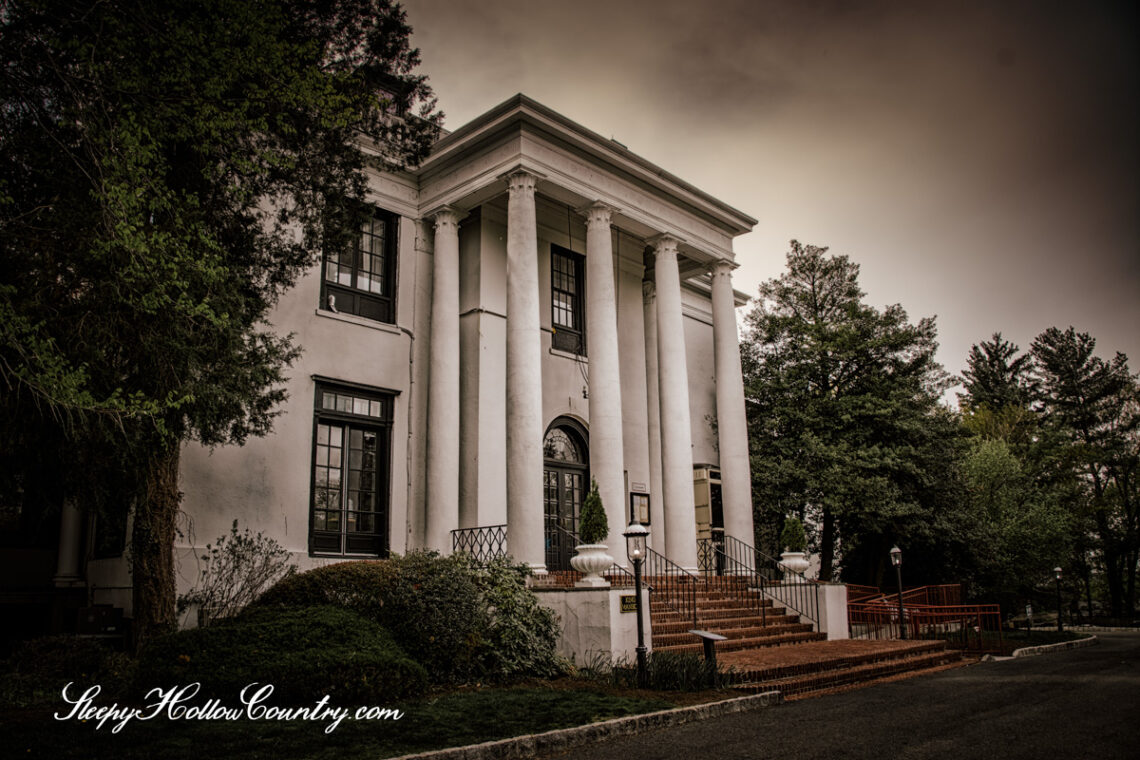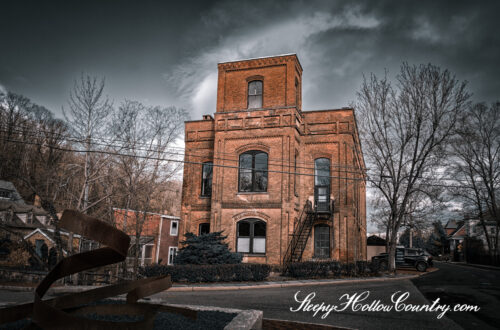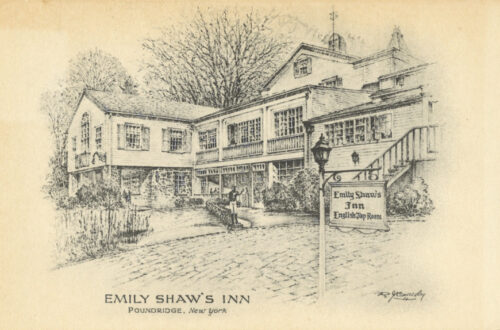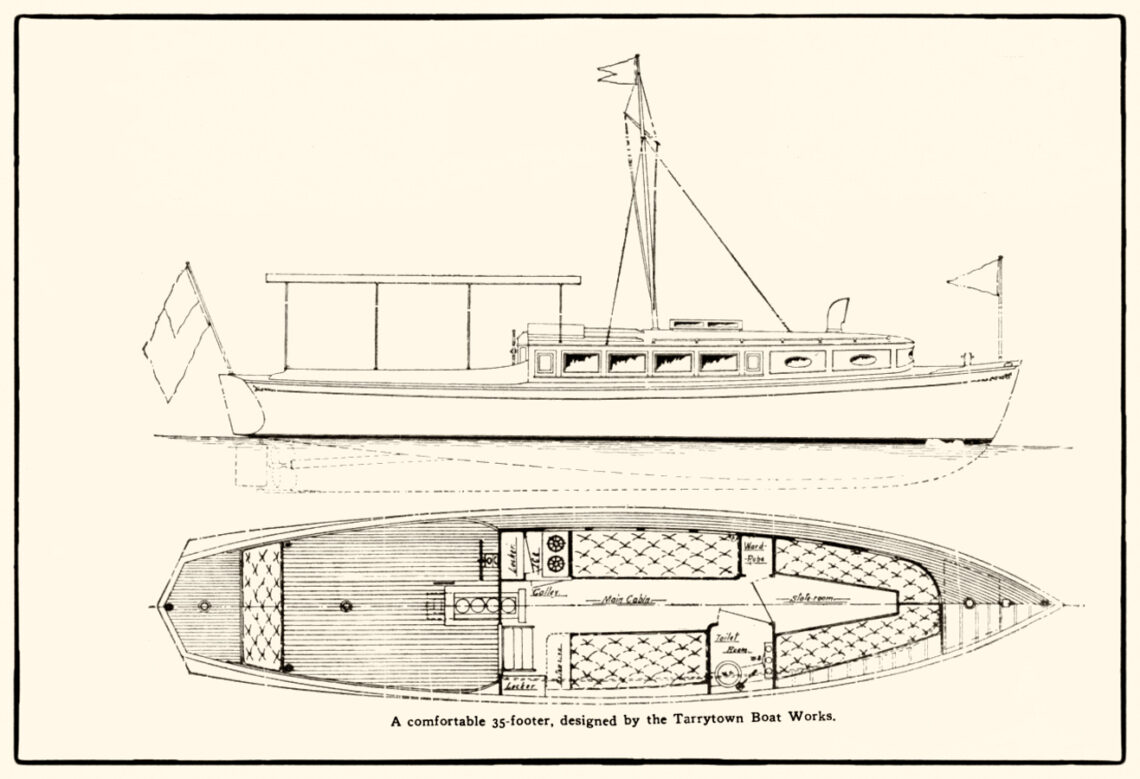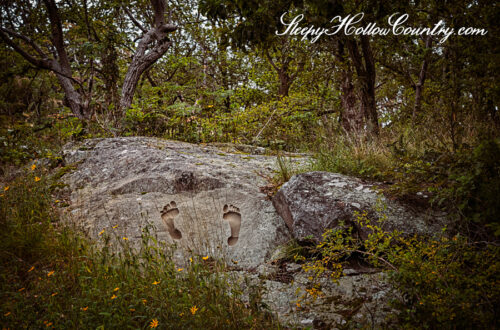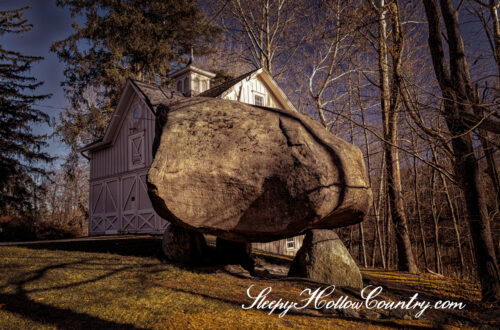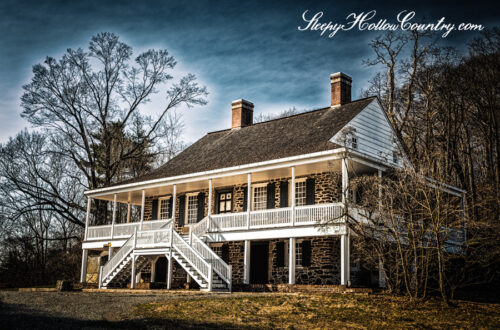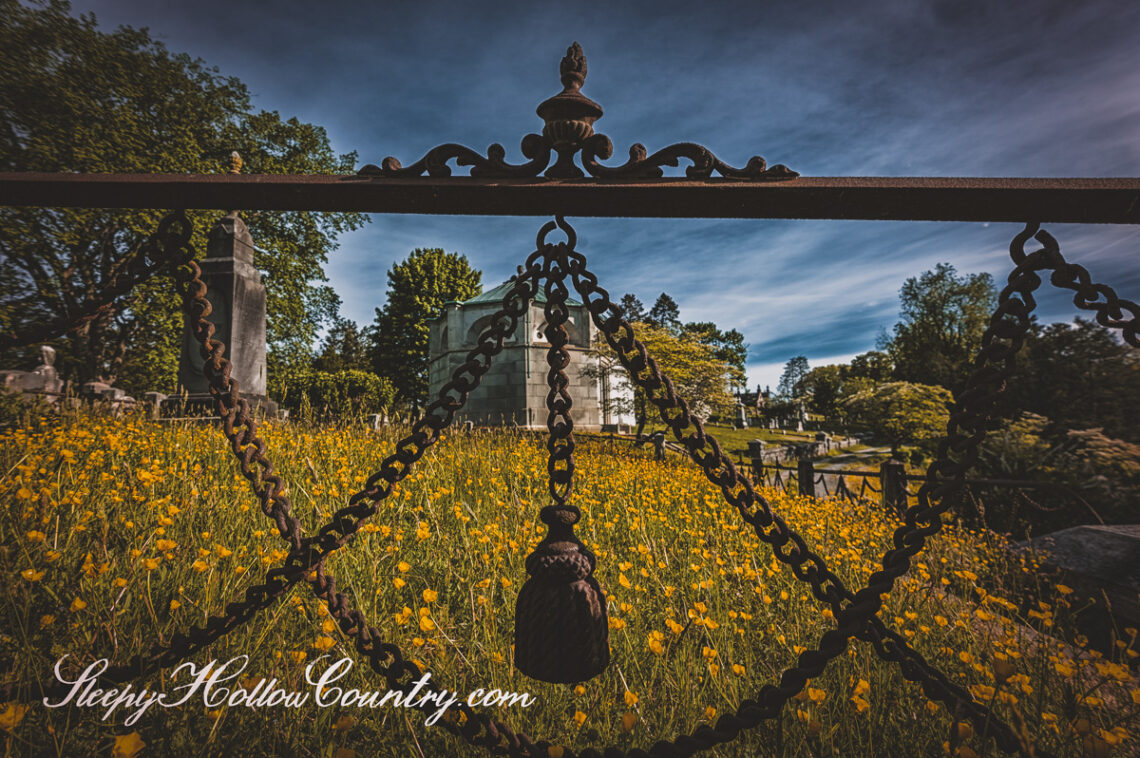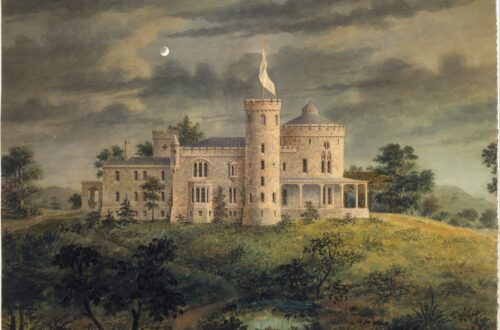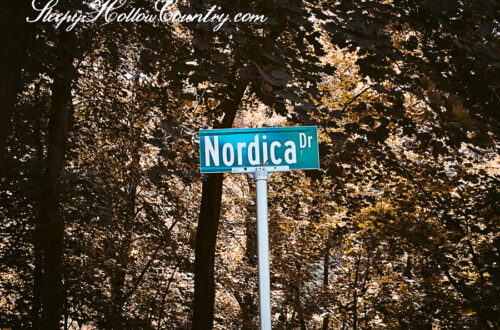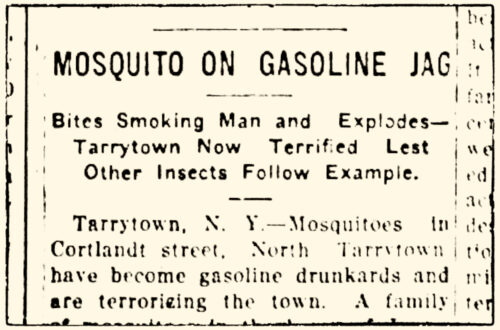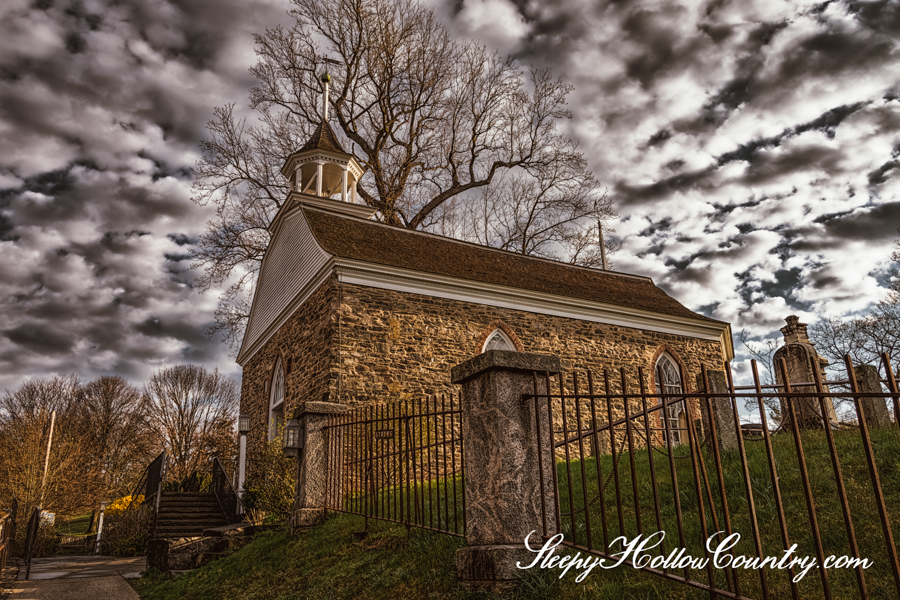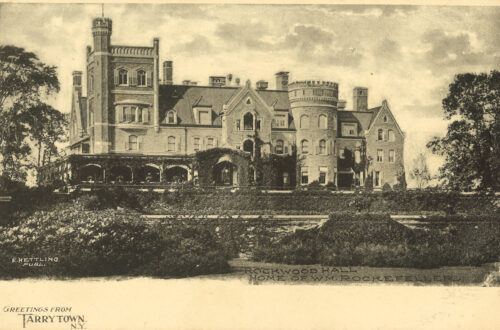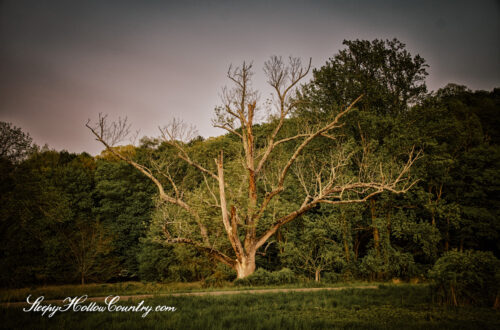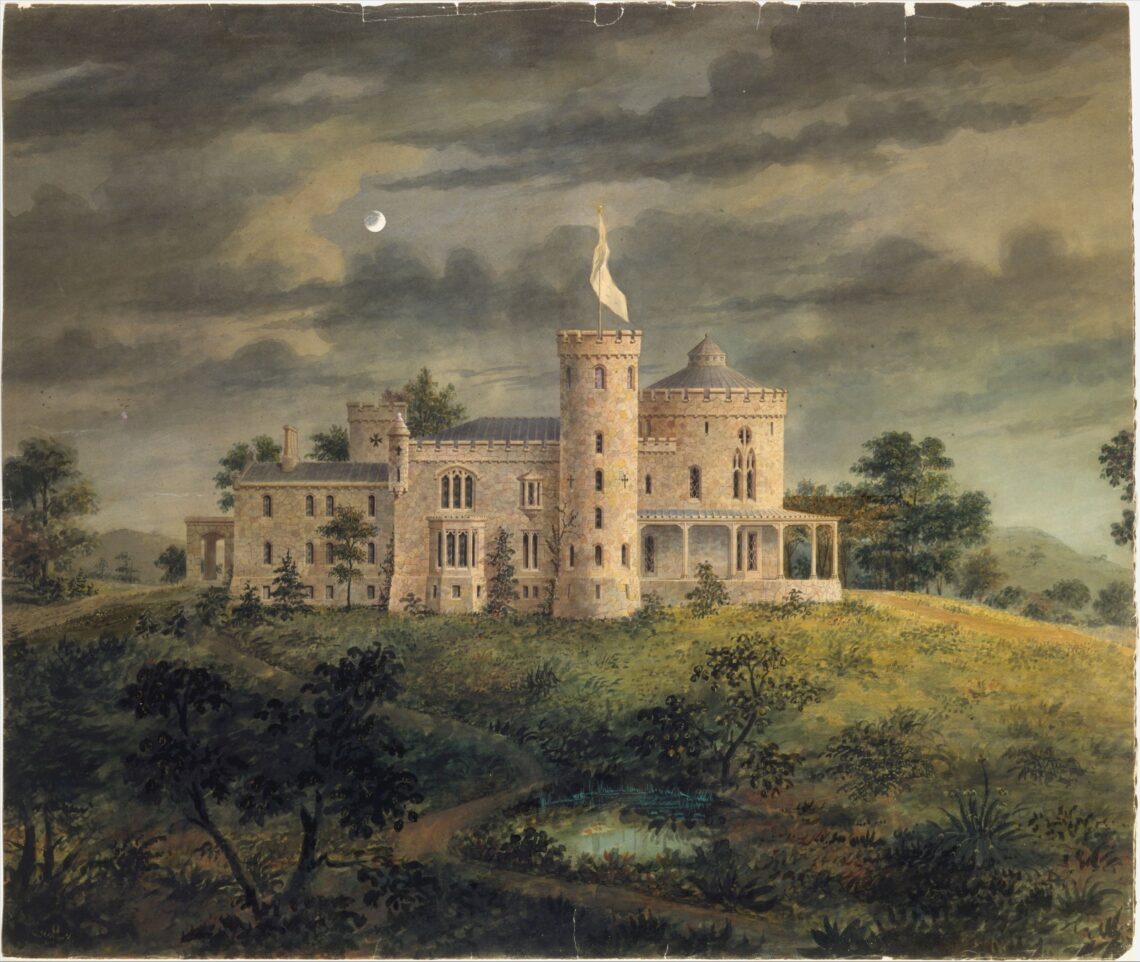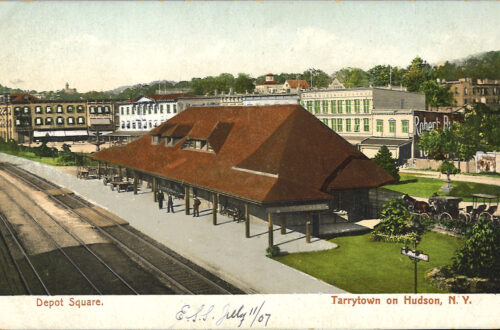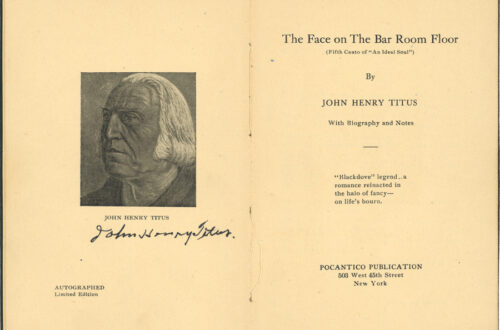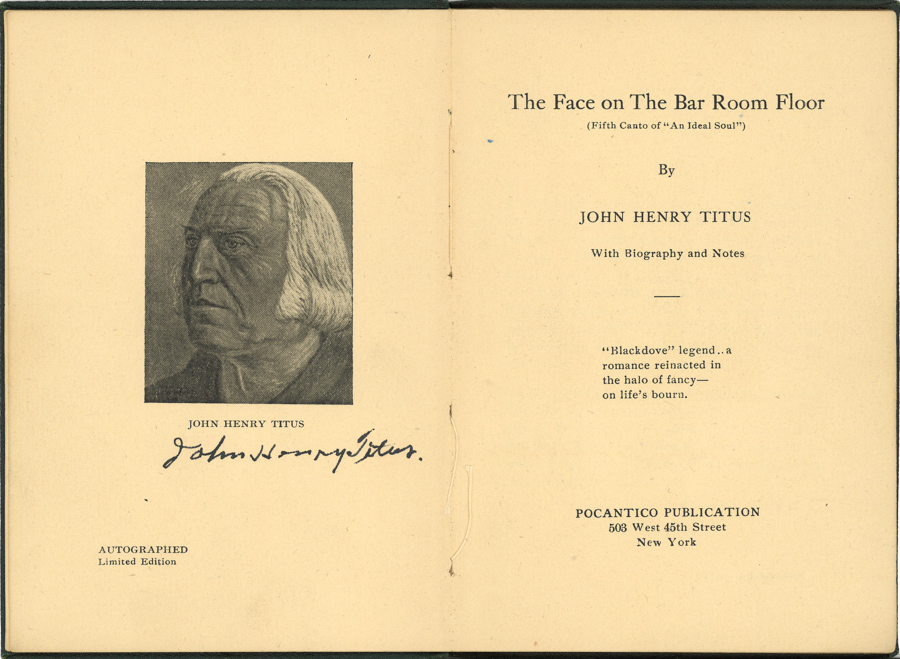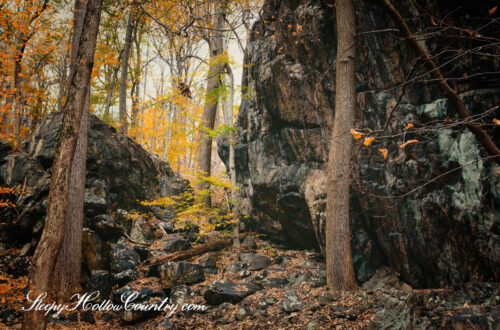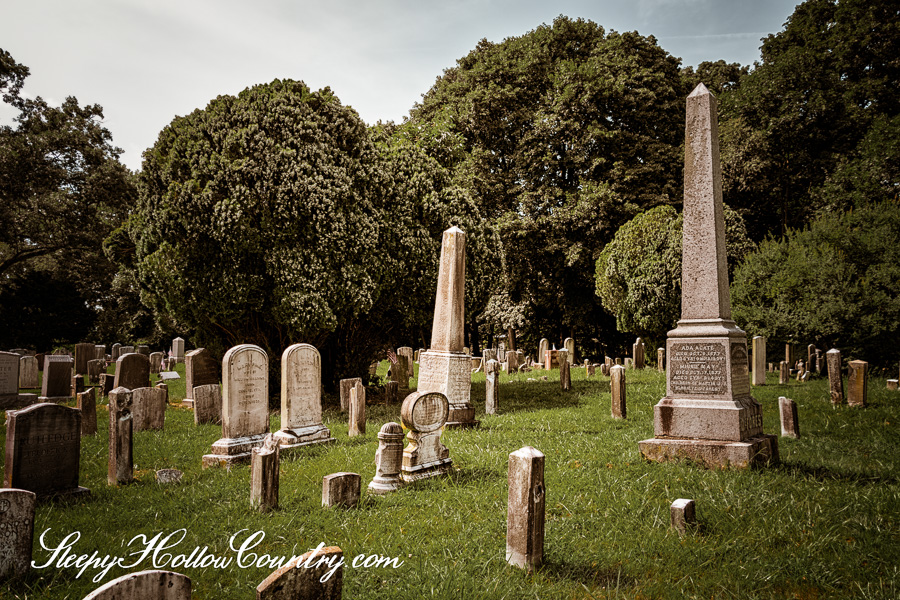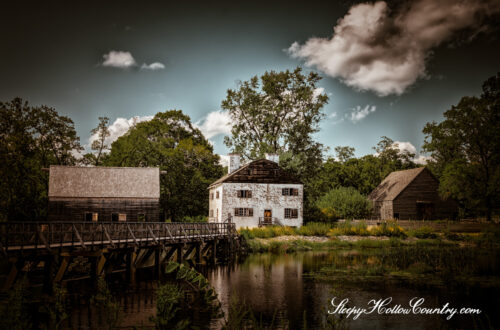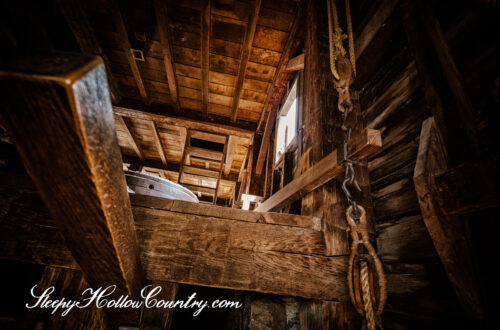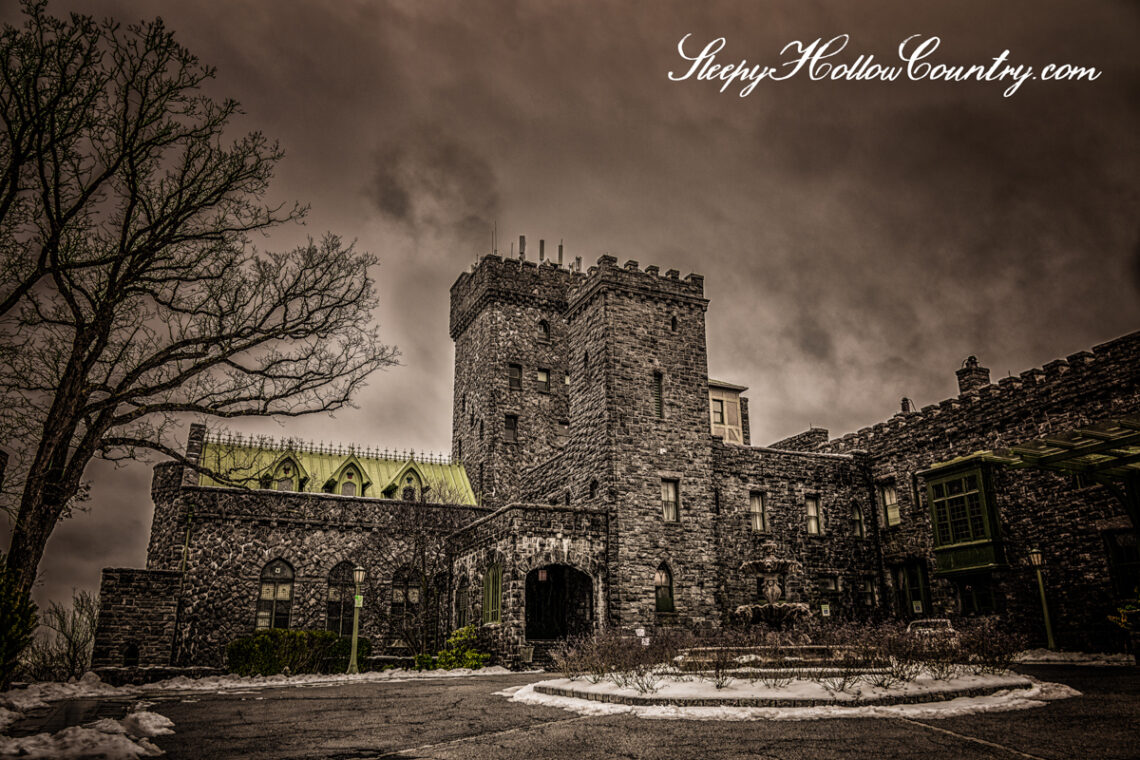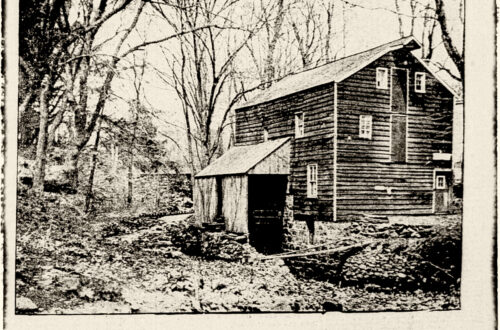cemeteries
This collection of articles, stories and legends relate to Sleepy Hollow Country's historic cemeteries.
-
The Ghost of Estherwood
Just a few miles south of Sleepy Hollow—where ghost stories practically grow on trees—you’ll find the Masters School, a private co-ed institution with a knack for blending academics and a dash of the supernatural. Its sprawling 96-acre campus in Dobbs Ferry, NY, is home to Estherwood, a 19th-century Gilded Age mansion built by James Jennings McComb for his second wife, Mary Esther Wood. And while Mary’s been gone for over a century, rumor has it she’s still hanging around, giving us the latest entry in our paranormal playlist: the ghost of Estherwood Mansion. J.J. McComb wasn’t just a man of wealth; he was a man of clever patents—specifically, a cotton-baling…
-
The Devil’s Footprints
Sleepy Hollow Country is steeped in folklore, but few tales are as peculiar as the story of the devil’s footprints in the village of Croton-on-Hudson. We stumbled across this geological phenomenon while sifting through newspaper archives for information on the Black Horse Tavern, a notorious Revolutionary War era public house on the bank of the Croton River. Below the headline “The Devil’s Footprints” ran the lede “Mysterious footprints in the solid rock on the east and west banks of the Hudson at Croton have puzzled the scientists, who believe them to have been made by a primeval man before the Stone Age.” We thought we had a pretty good handle…
-
The Ghost of Sybil Harris King
The ghost of Sybil Harris King is reputed to linger around her former mansion which today is part of the Tarrytown House Estate. This corporate retreat center and event venue, located in Tarrytown, New York, has a rich history that dates back to the 19th century. The property is the combination of three Gilded Age estates owned by wealthy families who were drawn to the Hudson River Valley for its scenic beauty and proximity to New York City. It is situated on East Sunnyside Lane, just off South Broadway and not far from Washington Irving’s home, Sunnyside. Of the three original mansions, two remain standing: Uplands of broker James S.…
-
Tarrytown Boat Works
Tarrytown Boat Works was part of a vibrant Hudson River working waterfront during the early years of the 20th century. It was one of at least three boat builders on the Tarrytown waterfront over the years, including local powerhouses John O. Brown and Julius Petersen. While traces of any local boat builders are hard to find 100 years later, we dug deep into the archives to piece together this brief history of Tarrytown Boat Works. Sadly, we have not been able to track down any surviving watercraft from this shop. What we know for sure is that the business was incorporated in 1910. The annual report from the New York…
-
Sleepy Hollow Cemetery
Sleepy Hollow Cemetery doesn’t just hold the dead—it holds the stories that made Sleepy Hollow Country what it is. Perched on ninety rolling acres in the heart of the Hudson Valley, this burial ground has been accumulating legends, titans of industry, and literary ghosts since 1849. It’s the kind of place where you can visit Washington Irving in the morning, pay your respects to a Rockefeller by noon, and walk past enough American history to fill a semester-long course, all while autumn leaves crunch underfoot and the Pocantico River winds through the hills. The cemetery’s connection to Irving’s famous tale is more than literary tourism. This is where the author…
-
The Old Dutch Church of Sleepy Hollow
Situated in the village of Sleepy Hollow, New York, the Old Dutch Church stands as a landmark of significant historical and cultural importance. As one of the oldest churches in the state, its timeworn stone walls and enduring architectural design have borne witness to centuries of change. Beyond its historical relevance, the church holds a unique place in American folklore as the very church and churchyard featured in Washington Irving’s renowned short story, “The Legend of Sleepy Hollow.” This connection has solidified its status as both a historical monument and a symbol of the region’s rich narrative heritage. Early History of the Old Dutch Church of Sleepy Hollow The precise age of…
-
Ericstan: The Lost Castle of Tarrytown
Once upon a time, in Sleepy Hollow Country, there were not one, but four impressive stone “castles” in the region. Two of these are still in the landscape today: Carrollcliff and Lyndhurst. The remaining two are no longer standing and lost to time. One had featured prominently, overlooking the village of Tarrytown, with towers and wisteria-covered walls that commanded one of the best views of the Hudson River. This lost castle was Ericstan. Architect Alexander Jackson Davis was busy designing and building residences in the Sleepy Hollow region in the early 19th century. He was an artistic acquaintance of George Harvey, the artist who designed Sunnyside for Washington Irving, and…
-
The Bard of Tarrytown
The Bard of Tarrytown. The Poet of the Pines. The Tanyard Poet. The World’s Most Gifted Seer, Palmist and Medium. These were just some of the professional titles used by the tireless and shameless self-promoter John Henry Titus throughout his long life. He missed the chance to apply even more apt titles to himself: Spinner of Yarns, Teller of Tall Tales, Purveyor of Pablum. Hold on as we explore the life of John Henry Titus through a trail of newspaper advertisements, news articles, and self published books. Here in Sleepy Hollow Country we are all too familiar with out-of-towners sweeping in to school us simple, unsophisticated yokels. A fellow named…
-
Sparta Cemetery
Sparta Cemetery, located in Ossining, New York, is a small yet historically significant burial ground that dates back to the early 18th century. It reflects the rich history and development of the region, offering insights into the lives of the people who lived in and around Ossining. Early History and Establishment The origins of Sparta Cemetery can be traced to the early 1700s, making it one of the oldest cemeteries in Westchester County. The land it occupies was once part of Philipsburg Manor, a colonial landholding of about 52,000 acres. Sparta was one of the earlier communities established in the area, and the cemetery served as the final resting place…
-
The Last Tarrytown Castle
Carrollcliffe, standing at one of the highest points in the village, is the last surviving Tarrytown castle. There were once two castles here. Or maybe four depending on who you ask and how you choose to define a castle. Just north was Ericstan, a castellated villa by Alexander Jackson Davis that was demolished in 1944. To the west was Edgemont, the painted brick home of Julian Detmer, with decorative crenelations in the style of a castle. To the south is Lyndhurst, which is occasionally described as a castle although it is more accurately a Gothic Revival mansion. Carrollcliffe was constructed by Howard Carroll, Inspector General of New York state’s troops in…
